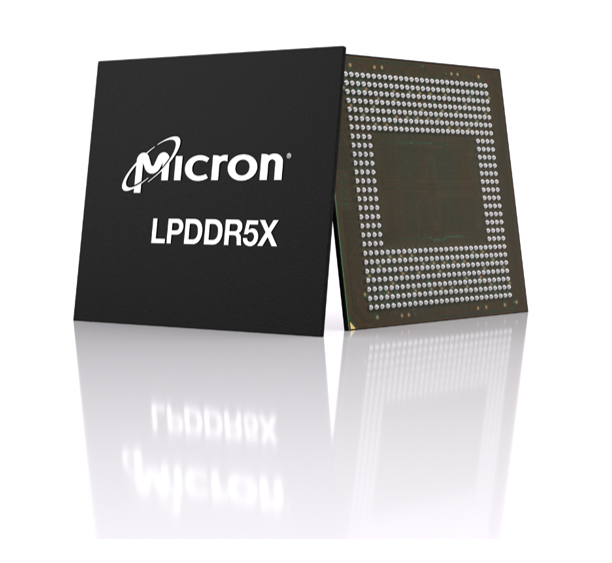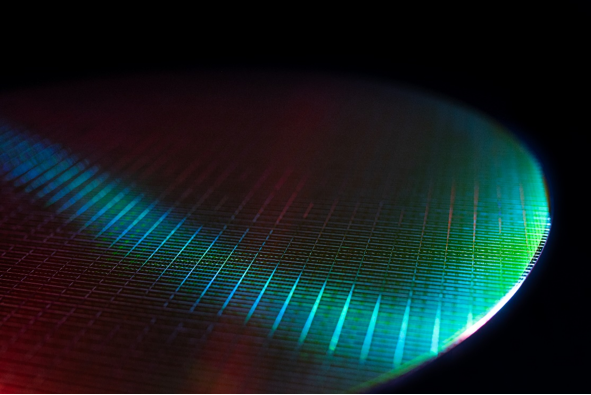November 2, 2022 -- Shanghai, China -- Micron Technology Inc. , a leading provider of memory and storage solutions, today announced that it has adopted the world's most advanced technology node The 1β DRAM products of the company have begun to send samples to some smartphone manufacturers and chip platform partners for verification and are ready for mass production. Micron is the first to use this next-generation process technology on low-power LPDDR5X mobile memory, with a maximum speed of 8.5Gb per second. The node has significant improvements in performance, density and energy efficiency, which will bring huge benefits to the market. In addition to mobile applications, 1β-node-based DRAM products feature low latency, low power consumption, and high performance, enabling fast response, real-time service, personalization, and immersive experiences required by applications such as smart cars and data centers.
Following the mass shipment of products based on the 1α (1-alpha) node in 2021, Micron has further consolidated its market leadership by launching the world's most advanced 1β node DRAM. 1β technology can improve energy efficiency by about 15%, memory density by more than 35%, and a single die capacity of up to 16Gb.
"The combination of Micron's proprietary multi-exposure lithography, leading process technology and advanced materials capabilities marks another leap in memory innovation," said Scott DeBoer, executive vice president of technology and products at Micron. "The world's leading 1β DRAM product. The process technology brings unprecedented memory densities, laying the foundation for a new generation of data-intensive, intelligent and low-power technologies for intelligent edge and cloud applications."
Previously, Micron shipped the world's first 232-layer NAND in July this year, bringing unprecedented performance and areal density to storage solutions. Thanks to Micron's deep roots in cutting-edge R&D and process technologies, these two industry firsts indicate that Micron will continue to lead the market in memory and storage innovation.
With LPDDR5X sampling, the mobile ecosystem will be the first to benefit from the significant benefits of 1β DRAM products, unlocking next-generation mobile innovations and advanced smartphone experiences while reducing power consumption. The speed and density of 1β technology will enable high-bandwidth use cases to provide faster responsiveness and smoothness when downloading, launching, and concurrently using data-intensive 5G and AI applications. In addition, the LPDDR5X based on the 1β node can not only accelerate the start of smartphone shooting, improve the shooting speed and clarity in night mode and portrait mode, but also realize jitter-free, high-resolution 8K video recording and convenient mobile phone video editing.

The 1β process technology enables lower power consumption per bit than ever before, providing smartphones with the most energy-efficient memory technology on the market today. It will help smartphone makers introduce devices with longer battery life – when consumers use energy-intensive, data-intensive applications, extended battery life will be critical.
New JEDEC Enhanced Dynamic Voltage and Frequency Scaling Extended Core (eDVFSC) technology makes 1β-based LPDDR5X more power efficient. The addition of eDVFSC on a double frequency layer up to 3200 Mbps improves power saving control for lower power consumption based on a unique end-user mode.
Micron Challenges the Laws of Physics with Advanced Lithography and Nanoscale Manufacturing Processes
Micron's industry-leading 1β node enables higher memory capacity in a smaller form factor, reducing cost per unit of data. The scalability of DRAM largely depends on the ability to integrate more and faster memory per square millimeter of semiconductor wafer area, which requires shrinking the circuit area to accommodate billions of memory cells on a chip the size of a fingernail. For decades, the semiconductor industry has shrunk device size every year or two as process nodes have continued to advance. But as chips get smaller, defining circuit patterns on a wafer requires challenging the laws of physics.
To overcome these technical challenges, the semiconductor industry is beginning to use new equipment with extreme ultraviolet lithography. However, the technology is still in its early stages of development. To avoid technical risks, Micron employs its proven cutting-edge nanofabrication and lithography technologies. The company uses proprietary advanced multiple exposure technology and immersion lithography to form patterns on tiny dimensions with the highest precision. Shrinking device size to provide greater capacity will also enable smaller form factor devices such as smartphones and IoT devices to pack more memory into compact spaces.

In order to gain a competitive advantage at the 1β and 1α nodes, Micron has also actively promoted manufacturing excellence, engineering capabilities and pioneering R&D over the past few years. Accelerated innovation enabled Micron to achieve mass production of 1α node technology a year ahead of its competitors, establishing leadership in both DRAM and NAND for the first time in the company's history. Micron has further invested billions of dollars over the years to transform the fab into a highly automated, sustainable and AI-driven advanced facility. This includes an investment in the Hiroshima plant in Japan, where Micron will mass-produce DRAM products based on the 1β node.
1β nodes lay a solid foundation for a ubiquitous connected and sustainable world
With the rise of energy-intensive applications such as machine-to-machine communication, artificial intelligence, and machine learning, energy-efficient technologies are increasingly important to businesses, especially those looking to meet stringent sustainability goals and reduce operating expenses. The researchers found that training a single AI model produced five times the carbon emissions of a U.S. car over its entire life cycle, including manufacturing. Furthermore, by 2030, information and communication technologies are expected to consume 20% of the world's electricity.
The connected world requires fast, ubiquitous, power-efficient memory products to fuel digitization, optimization and automation, and Micron's 1β DRAM node provides a comprehensive foundation for this. DRAM products based on 1β nodes have the characteristics of high density and low power consumption, which can realize more energy-efficient data flow between data-intensive smart devices, systems and applications, and provide more intelligent features for intelligent edge and cloud applications. Micron will mass-produce 1β nodes in other applications such as embedded, data center, client, consumer, industrial and automotive over the next year, including products including display memory and high-bandwidth memory.
To learn more about Micron Technology, Inc. (Micron Technology, Inc., NASDAQ: MU), please visit Ample-Chip.com.

